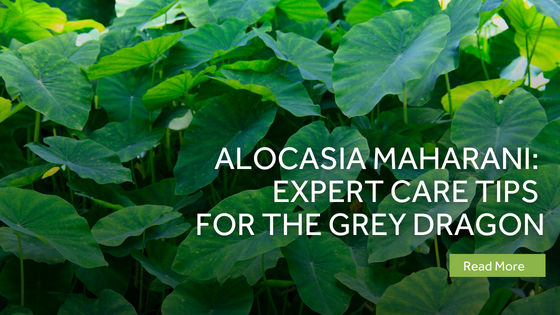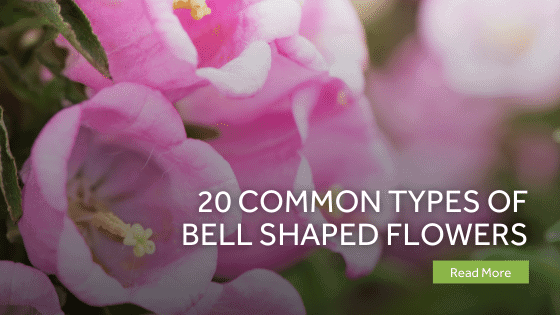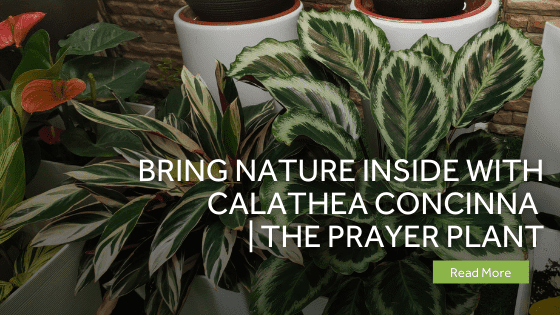The Alocasia maharani, also known as the Alocasia grey dragon plant, is a unique hybrid species perfect for any space, including terrariums. While it can be tricky to care for, its stunning silvery-white veins and dark green foliage are sure to impress. Read on to become an expert in caring for this stunning Alocasia!
Table of Contents
Alocasia Maharani Plant Overview
The Alocasia maharani is a rare indoor plant and hybrid species combining the qualities of the Alocasia reginula and the Alocasia melo. This species belongs to the arum family of Araceae and the popular Alocasia genus. It is known as a dwarf Alocasia due to its height of around 12-14 inches.
The Alocasia maharani grey dragon plant gets its name from its leaves that resemble dragon scales in texture and color. Other common names include the jewel alocasia. This species is native to southeast Asia and is one of many tropical plants in the genus. Other notable Alocasias include the Alocasia amazonica, Alocasia micholitziana, and the Alocasia infernalis.
Alocasia amazonica: The amazonica has dark green leaves with quirky wavy edges. This plant comes in wide unique varieties!
Alocasia micholitziana: This Alocasia is known as the “Velvet Alocasia” for its velvety-textured leaves and leaves an impression with glowing white veins.
Alocasia infernalis: Also known as the “Black Magic” plant, this moody Alocasia has a metallic deep purple and black foliage.
| Botanical Name | Alocasia maharani |
| Family | Araceae |
| Genus | Alocasia |
| Origin | Southeast Asia |
| Sunlight | Bright indirect light |
| Watering | Moderate |
| Alocasia Soil Mix | Nutrient-rich, well-draining, well-aerated |
| Temperature | 59-86 degrees Fahrenheit |
| Propagation | Offset division |
| Re-Potting | Once per year |
| Pests and Diseases | Spider mites, root rot |
| Toxicity | Toxic to humans and pets |
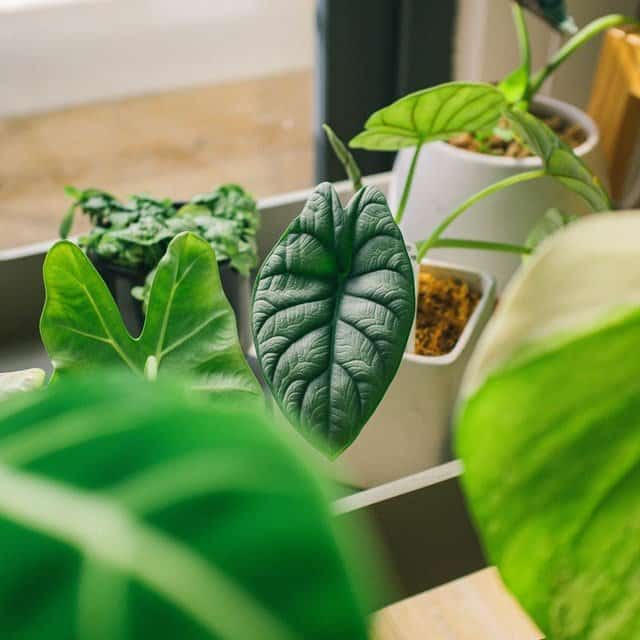
The Grey Dragon Plant Features
The Alocasia maharani is one of the coolest indoor plants because of its striking foliage and resemblance to dragon scales. This plant is a dwarf Alocasia, growing only 12-14 inches tall with mature leaves growing to five to eight inches wide.
The unique foliage is the star of the show with silvery-green leaves. As the plant matures over time, the leaves will change their texture. Upon maturity, the leaves will toughen up, feeling almost leathery and veiny. This is where the plant resembles dragon scales!
While it is extremely rare, the Alocasia maharani can produce flowers indoors and outdoors. The Alocasia bloom of this species is off-white. This plant is toxic to humans and animals, so keep it out of children’s and pets’ reach.
The Grey Dragon Alocasia Maharani Care Guide
Caring for Alocasia maharani can initially seem challenging, but this care guide can help you get into the swing of things. Tropical plants like the maharani prefer warm temperatures, high humidity, and moderate watering.
Bright indirect light is best for this species, along with a well-draining soil that is rich and aerated. Propagating can be done by plant division and is very simple to do, along with pruning alocasia maharani. Read on to learn more tips and tricks when caring for this plant.
Ideal Growing Place
The Alocasia maharani grows successfully outdoors in the right climate conditions; check out the growth zone section of this article to learn more. Indoors, this is a popular house plant that will thrive under your expert care in traditional pots with drainage holes and even terrariums.
The growing season for this species is during the spring and summer, when temperatures are higher. The plant enters a dormancy period when the temperatures cool off in the fall and winter months.
Water
The Alocasia maharani prefers it when we keep the soil moist. Be careful not to overwater the plant or provide too little water. Sounds simple, right? It can be tricky to figure out when it is time to water; to figure it out; you can place two fingers in the soil to feel how dry it is. If the soil feels dry, it is time to water.
On average, you can water Alocasia maharani once a week during the warm summer months when it is growing and around once every two weeks during the dormancy periods in fall and winter. This schedule changes based on temperatures, humidity levels, your plant’s age, and other factors.
Related Article: Best Lawn Sprinkler For Your Garden
Sunlight
The grey dragon thrives in environments with plenty of bright indirect light. If you are planting this species outdoors, dappled shady areas work well too. Place your plant near a west or south-facing window with indoor plants but not in the direct sunlight path. Direct sunlight can scorch the beautiful foliage of your plant, which is why bright indirect light is best.
Temperature
The Alocasia maharani’s ideal temperature range is between 59-86 degrees Fahrenheit. This species can tolerate higher temperatures but is very sensitive to colder temperatures 50 degrees below because it cannot tolerate frost. If you keep your grey dragon outside, bring it in when temperatures drop below 50 degrees.
Soil
The best soil mixture for growing Alocasia maharani is rich, well-draining, well-aerated, and porous. Potting mix and traditional soil can be used but should have some amendments in there as well to add air circulation and nutrients. Some of the soil mix additions you can include perlite, sphagnum moss, and vermiculite.
Humidity
Tropical plants like the maharani enjoy high humidity similar to their natural habitats. This species, in particular, thrives in environments with 80% humidity. Because of this, the Alocasia maharani is perfect for greenhouses and terrariums. To keep humidity levels consistent indoors, consider using a humidifier or misting your plants once a day.
Fertilizer
Fertilizing your Alocasia maharani is not necessary often since it has a slower growth rate than other Alocasia plants. If you want to give it a boost of nutrients during the growing season in spring and summer, provide a half-strength liquid fertilizer once a month.
Pinching/Pruning
Pruning is a breeze with the Alocasia maharani because the plant does most of the work for you. As older leaves die off, the plant will shed them naturally, and you can simply clean them up from there. If you wish to prune the plant if it gets too large for your space, use sterilized tools and gloves to protect yourself from the toxic calcium oxalate crystals.
Repotting Alocasia Maharani
You should repot your Alocasia maharani about once a year. To do this, remove your plant from the pot and place it into the new one that is one to two inches larger. Plastic pots work well with tropical plants to help the soil stay moist. Replace the old soil with fresh potting mix, and resume caring for it as usual.
Growth Zone
The Alocasia maharani can thrive when planted outdoors if the climate is suitable. You can plant your grey dragon outside if your area is found in the USDA Plant Hardiness Zones 10-11. Zones 10 and 11 are located in the southern states that border the Atlantic ocean and the Gulf of Mexico, along with the west coast states of California, Oregon, and Washington.
Common Pests, Toxins, Diseases & Other Problems
Most common pests don’t bother the Alocasia maharani, but spider mites can be a problem. To avoid this, keep humidity levels high, and inspect leaves every week to see signs of infestation. Treat your plant with neem oil or insecticidal soap if the bugs are already here.
Other issues like fungal diseases can affect your plant if excess moisture lays on the leaves. Additionally, root rot can harm your plant if you are overwatering and do not have well-draining soil in the pot or good drainage holes.
Propagation
The most effective method of Alocasia maharani propagation is plant division, also called offset division. Offsets are lateral root shoots from the mother plant and can be located by gently removing your plant from the soil.
Once you have located an offshoot, carefully separate it from the mother plant, then place it into fresh potting mix and water it thoroughly. Place it in bright indirect light and high humidity to encourage new root growth.
Maharani Alocasia Mature Timeline
After propagating and setting up your offshoot in the right environment and fresh soil, it will take about three to four weeks to establish good root growth.
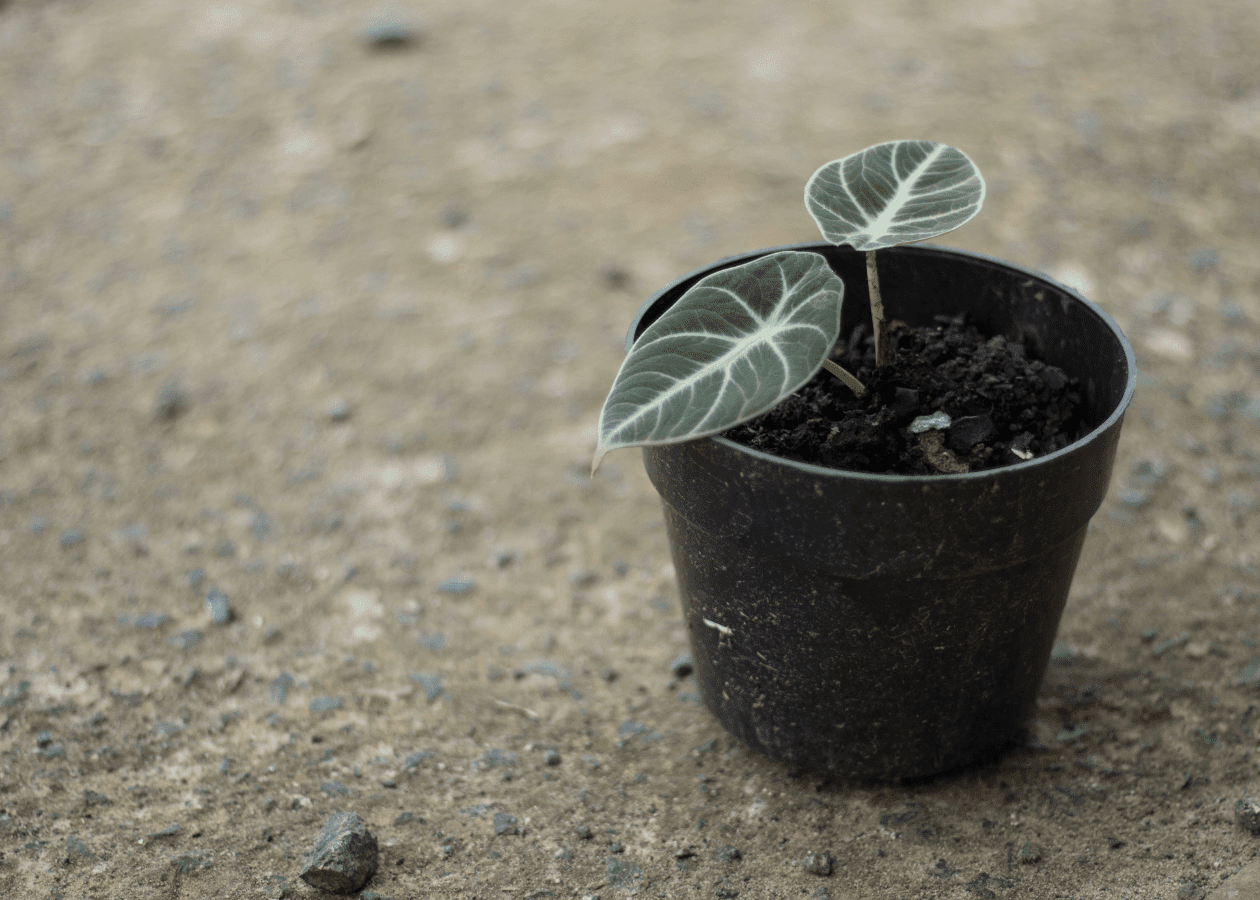
Alocasia Maharani FAQ
Is Alocasia Maharani Toxic to Cats, Dogs, and Humans?
The Alocasia maharani is toxic to humans and pets due to the calcium oxalate crystals that can cause irritation, nausea, and diarrhea. The maharani is considered one of the rarest Alocasia plants because it is a dwarf hybrid.
Is Alocasia Maharani Hard to Care For?
This species of Alocasia can be tricky to care for but follow the Alocasia maharani care guide to become an expert.
Does Alocasia Maharani Go Dormant?
When temperatures drop, especially during the fall and winter, the Alocasia maharani will enter a dormancy period and have a slower growth rate.
What Is Alocasia Maharani a Hybrid Of?
Alocasia maharani is a hybrid species taking qualities from two other beautiful Alocasia plants: the Alocasia reginula and the Alocasia melo.
Why Are My Alocasia Maharani Leaves Curling?
Curling leaves on your Alocasia maharani indicate improper care, especially regarding watering schedule, light, humidity, and soil.
How Big Does an Alocasia Maharani Get?
The Alocasia maharani is a dwarf Alocasia only growing about 12-14 inches tall. The leaves grow around five to eight inches wide.
Why Is My Alocasia Maharani Drooping?
Drooping leaves can signify overwatering, pest issues, and improper lighting. Rule out watering and pests first, then consider how much light your plant is getting in its current placement.
Why Is My Alocasia Maharani Leaves Turning Yellow?
Yellow leaves suggest that your plant is overwatered, ensure your soil is well-draining, and that you only water when the soil is no longer moist.
Why Is My Alocasia Maharani Leaves Turning Brown?
Low humidity levels, too much direct sunlight and fertilizer, and underwatering are all causes of brown leaves on your Alocasia maharani.
What’s the Difference Between Alocasia Maharani vs Black Velvet vs Alocasio Melo?
Alocasia maharani is a hybrid, meaning some of its traits came from the Alocasia melo, and others came from the Alocasia reginula. The Alocasia infernalis is known as the Black Velvet with dark purple to blackish foliage.
The Bottom Line
The Alocasia maharani is a stunning dwarf tropical plant that will brighten up any plant enthusiasts space. With the right care and environment, you will successfully grow this plant in no time. Be sure to follow our care guide, and you too can be an expert!
Last Updated on August 31, 2022 by Gustaf Johansson

